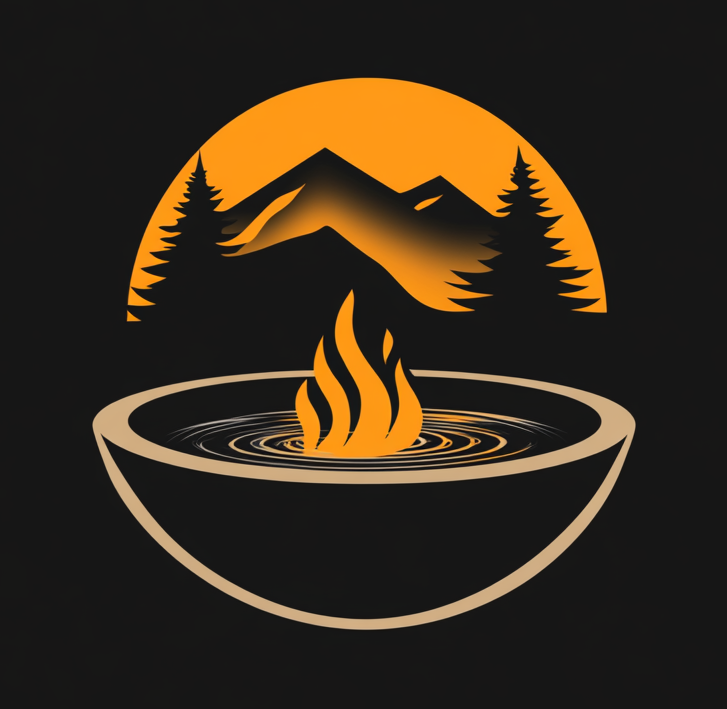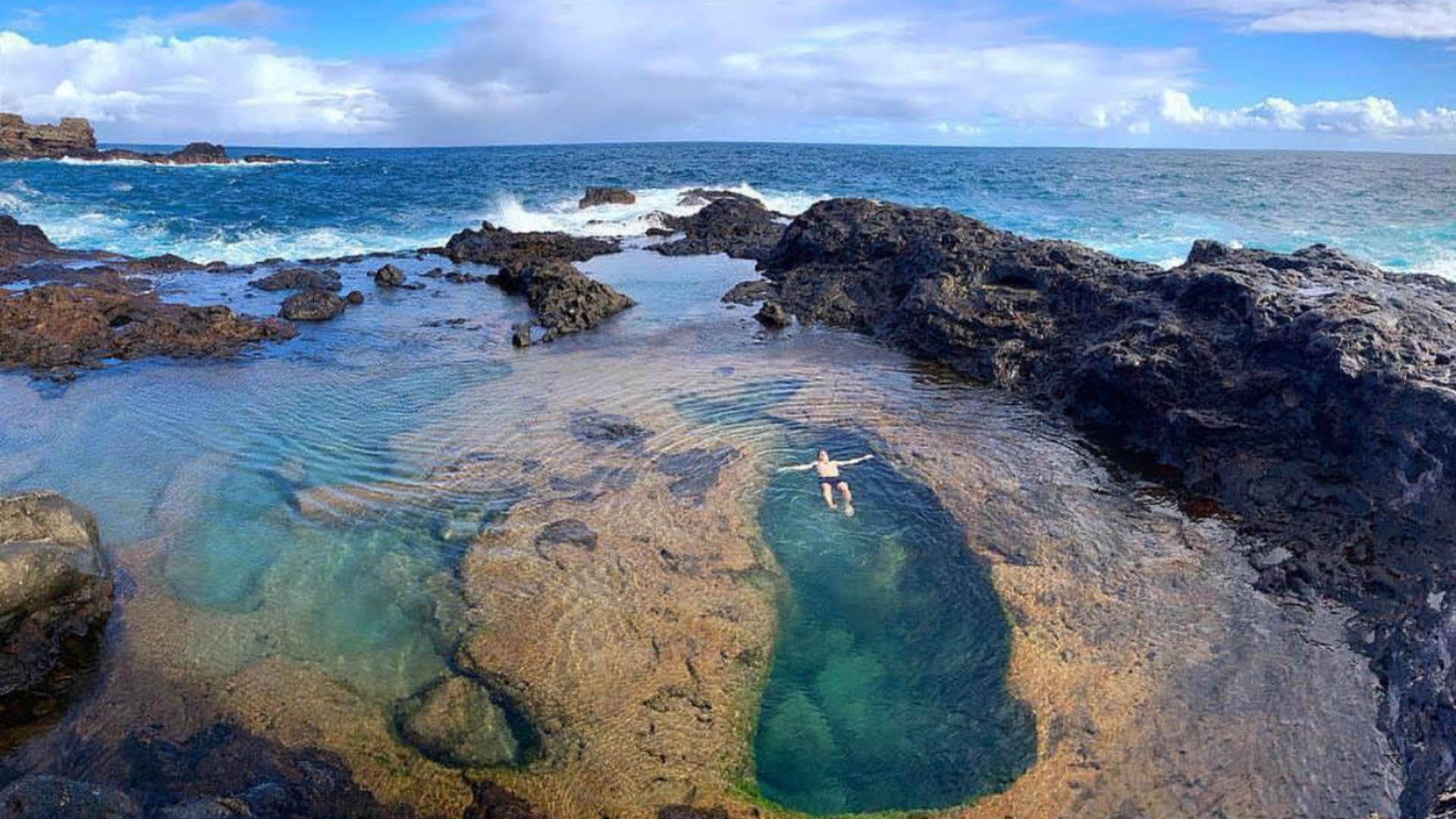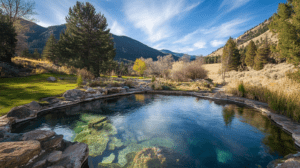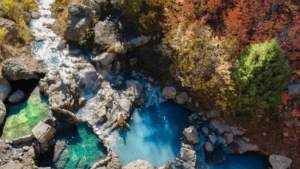Hawaii’s natural beauty extends beyond its stunning beaches and lush landscapes; the islands are also home to incredible hot springs, such as Ahalanui Warm Pond and Pohoiki Warm Springs, that offer a unique blend of relaxation and adventure.
From the therapeutic waters of Pohoiki Warm Springs to the picturesque Queen’s Bath in Kaua’i, each spot has its allure, showcasing the diverse marine life heated by volcanic activity.
This article explores the top six hot springs in Hawaii, including the Seven Sacred Pools and Olivine Pools, and shares tips on how to get there, what to bring, and how to enjoy your visit safely.
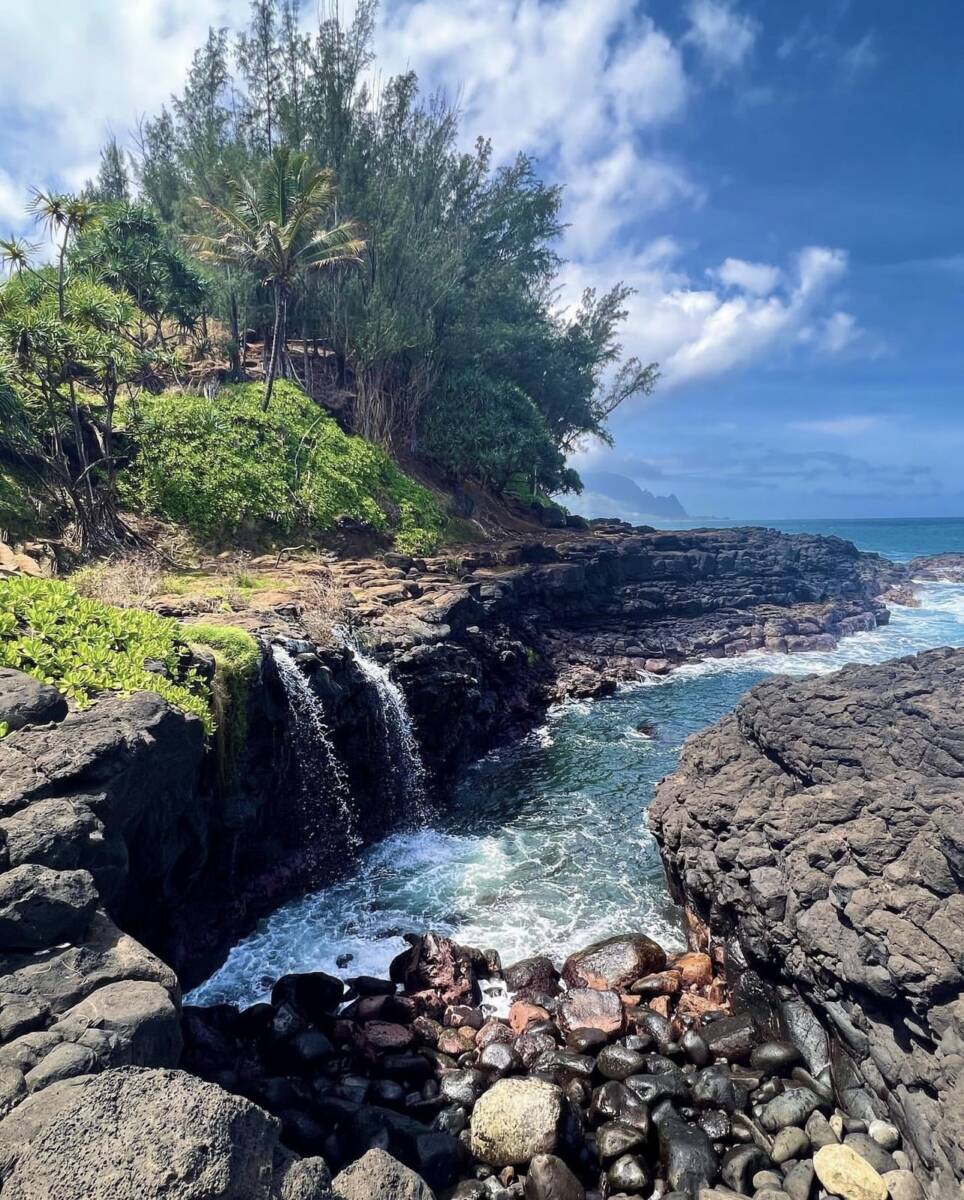
Image by @liz_alcantar
Key Takeaways:
- Hawaii is home to some of the best hot springs in the world, offering visitors a unique and rejuvenating experience.
- Each of the six hot springs mentioned, from Pohoiki Warm Springs to Olivine Pools and the Sacred Source Hot Springs, offers a different and equally breathtaking experience.
- When visiting hot springs in Hawaii, pack essential items such as a swimsuit and sunscreen, and follow safety tips to ensure a safe and enjoyable experience.
Map of Hawaii Hot Springs
The Top 6 Hot Springs in Hawaii
Hawaii is home to some of the most stunning hot springs and tide pools, such as the Seven Sacred Pools and Kapoho Tide Pools, each offering a unique soaking experience amidst the islands’ breathtaking landscapes.
Here’ s our list of the 6 best hot springs in Hawaii.
Pohoiki Warm Springs

Image by @kevintheexplorer
Pohoiki Warm Springs, located on the Big Island of Hawaii, is a prime example of a geothermally heated hot spring that offers visitors a unique soaking experience amidst the backdrop of the Pacific Ocean, especially following the 2018 eruption that reshaped the landscape.
Known for its soothing waters heated by volcanic activity, the springs provide a tranquil environment to relax and enjoy the area’s natural beauty, especially after the 2018 volcanic eruption that reshaped the landscape around it, emphasizing the importance of local attractions.
The water temperature at the springs typically hovers around a comfortable 90 to 100 degrees Fahrenheit, making it ideal for those looking to unwind and rejuvenate. Visitors will find various amenities in the vicinity, such as picnic areas, parking facilities, and even nearby hiking trails, all designed to enhance their stay.
Post-eruption, the scenery features stunning contrasts of lush greenery against rocky new formations, providing a unique backdrop for guests.
- Marine life, such as tropical fish and sea turtles, can be observed while snorkelling nearby.
- Accessibility has been improved, ensuring that tourists and locals can enjoy this natural wonder
Thanks to the recent restoration efforts and ongoing maintenance, Pohoiki remains a must-visit destination for anyone exploring Hawaii’s incredible geothermal offerings.
Queen’s Bath, Kaua’i
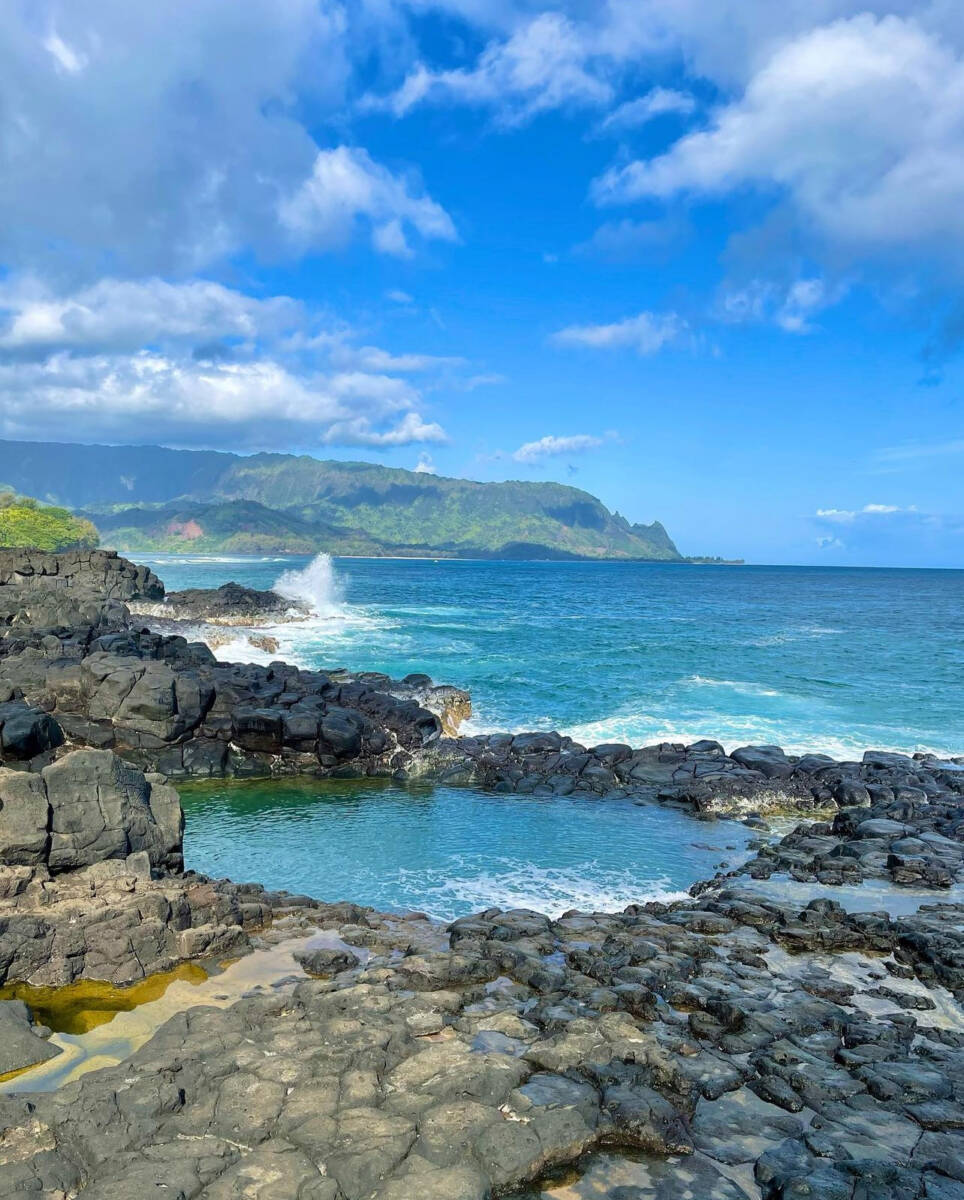
Image by @jen_claire
Queen’s Bath, situated on the north shore of Kaua’i, is a breathtaking natural tide pool that offers a unique swimming and snorkelling experience with vibrant marine life. Nestled among tropical trees and rocky cliffs, this stunning location is a popular spot for relaxation and a reminder of the island’s rugged beauty and the need to heed health warnings regarding the ocean’s conditions.
Accessibility plays a crucial role in the appeal of Queen’s Bath, as visitors can reach this awe-inspiring destination via a short hike that rewards them with scenic views. To make the most of their visit, it’s advisable to come during low tide, which provides the safest swimming conditions, typically between late morning and early afternoon. Safety precautions are essential; visitors should be cautious of slippery rocks and unpredictable waves.
Types of marine life commonly seen include:
- Colourful fish species
- Hawaiian green sea turtles
- Gentle monk seals
The area surrounding Queen’s Bath features several attractions, such as picturesque beaches and hiking trails, alongside marine life, making it an excellent stop for those wishing to explore Kaua’i’s natural wonders further.
Pools of Oheo / The Seven Sacred Pools
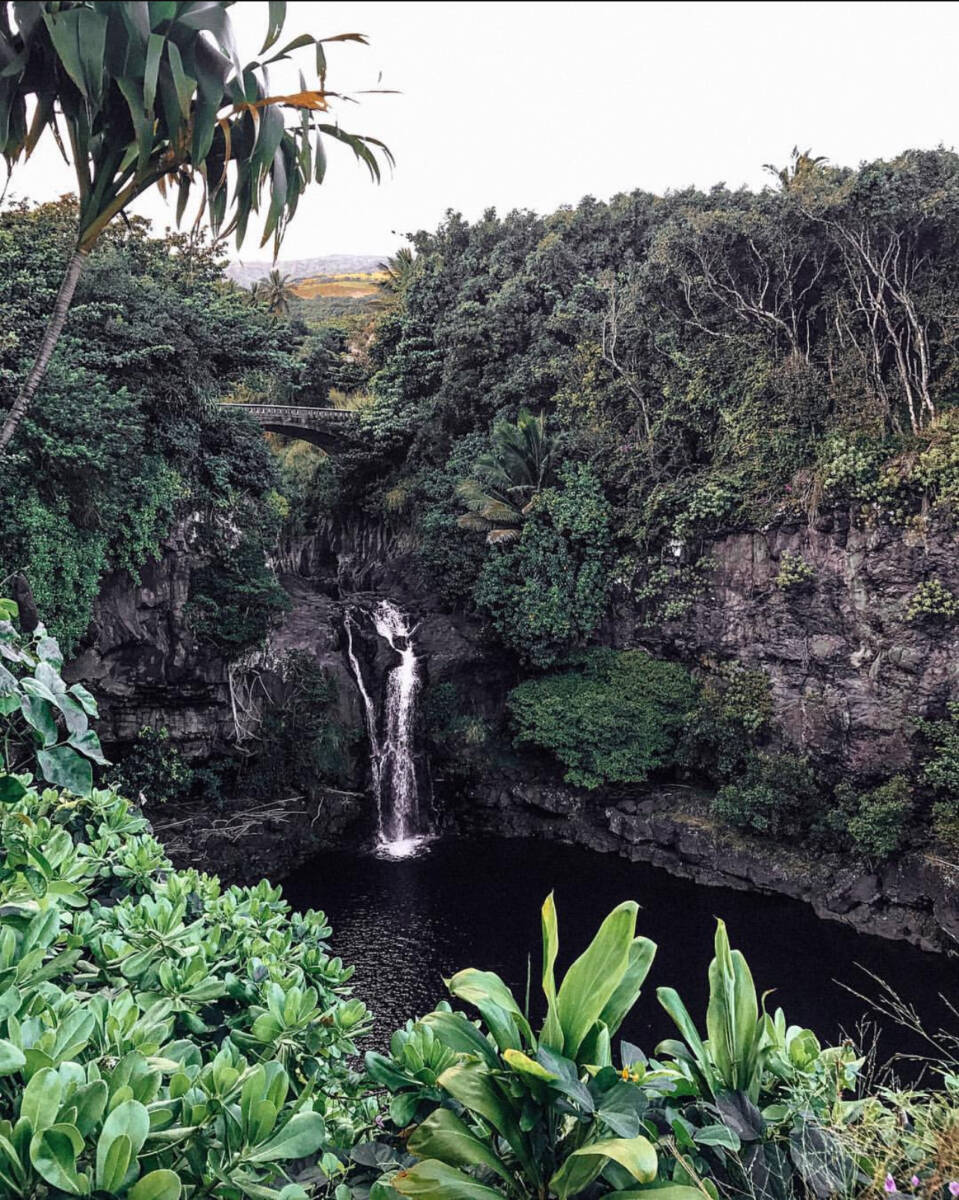
Image by @khanda_a
The Pools of Oheo, famously known as the Seven Sacred Pools, is a cascading waterfalls and natural pools located within Haleakala National Park on Maui, offering a breathtaking oasis for swimming amidst lush tropical trees. These pools are notable for their stunning beauty and serve as a reminder of the importance of safety and awareness of health warnings due to changing conditions.
Visitors are often captivated by the crystal-clear waters and vibrant surroundings as they explore the geological features that have formed over centuries. The rocky terrain provides an adventurous backdrop, making it a unique destination for outdoor enthusiasts.
Accessibility is reasonably straightforward, with well-marked trails leading to the pools; however, it’s advisable to wear sturdy footwear when navigating the pathways.
- Swimming is permitted in designated areas only, ensuring the safety of all guests.
- It is crucial to be mindful of potential hazards, such as slippery rocks and swift currents, which can change dramatically after rain.
Visitors should heed any posted safety guidelines to maximize their experience while minimizing risks. The tranquillity and natural splendour of the Pools of Oheo make it an unforgettable attraction for anyone visiting Maui.
Kapoho Tide Pools, Hawai’i (closed)
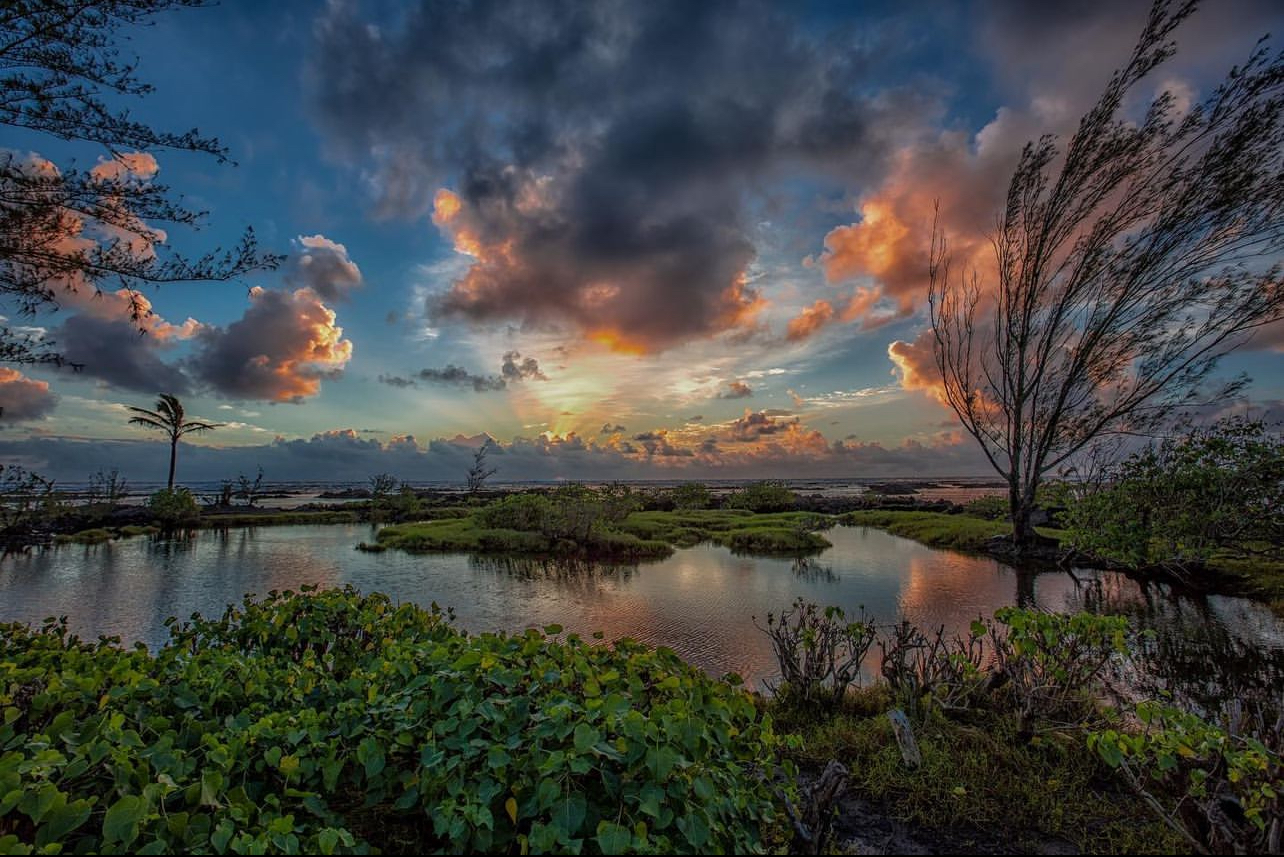
Image by @wendiforster
Previously known for their vibrant marine life and snorkelling opportunities, the Kapoho Tide Pools in Hawaii are closed due to the 2018 volcanic eruption, affecting Puna’s unique soaking experience and conservation efforts.
This once-popular destination allowed visitors to explore tide pools teeming with colourful marine creatures nestled among the volcanic lava structures, making it a unique part of Hawaii’s natural landscape, and highlighting the significance of volcanic lava and aquatic life.
The eruption’s impact not only changed the geography but also brought attention to the need to conserve Hawaii’s delicate ecosystems, especially in areas like Kapoho Tide Pools and the surrounding marine life. Visitors to the Kapoho Tide Pools, when they were accessible, had the unique opportunity to witness the intricate balance of life within these natural aquariums, highlighting the significance of preserving such habitats.
Since the eruption, the area has undergone a natural transformation, with new volcanic formations altering the shoreline. This change serves as a reminder of the ever-evolving landscape of Hawaii, making it a subject of interest for ecologists and tourists alike.
- Snorkeling experiences in the vibrant pools
- Learning about marine conservation efforts
- Viewing unique geological formations
As recovery efforts continue, there is hope that the Kapoho Tide Pools will reopen, allowing visitors to engage with this incredible natural treasure.
Makapu’u Tide Pools, Oahu

Image by @insatiable.foodie
The Makapu’u Tide Pools on Oahu offer an exhilarating experience for swimming and snorkelling in a picturesque setting that showcases the beauty of Hawaii’s marine life, making it a must-visit for those exploring natural hot springs. These tide pools, formed by volcanic rock, provide a safe environment for visitors to explore the vibrant underwater ecosystems that thrive in crystal-clear water.
Accessing these tide pools involves a moderately challenging hike that rewards adventurers with stunning vistas. Once there, guests can enjoy generally calm swimming conditions, making it suitable for various skill levels.
The variety of marine life is breathtaking, with colourful fish, sea urchins, and sometimes even sea turtles visible beneath the surface. Visitors should exercise caution due to sharp rocks and strong currents during certain tides.
Safety precautions:
- Check tide charts before swimming.
- Wear reef-safe sunblock to protect marine ecosystems.
Nearby attractions such as the Makapu’u Point Lighthouse Trail, the scenic beaches of Waimanalo, and the nearby Sacred Source Springs further enhance the overall experience, making this a must-visit destination for nature lovers.
Olivine Pools, Maui

Image by @james.avedon
The Olivine Pools on Maui are a set of stunning natural pools along the rugged coastline, known for their beautiful views and unique geological formations.
These extraordinary pools, framed by dramatic cliffs and the azure ocean, provide an inviting oasis for adventurers and nature lovers alike, contributing to Hawaii’s hot springs’ allure.
With crystal-clear waters glimmering under the tropical sun, they present numerous swimming opportunities that beckon visitors to take a refreshing dip. Accessibility can vary, with some trails requiring a moderate hike, but the journey is undoubtedly rewarding.
- Safety considerations should not be overlooked, as the ocean can be unpredictable.
- Visitors are encouraged to check conditions before entering the pools.
The stunning views from the surrounding area offer countless photo opportunities, and the vibrant marine life adds to the overall experience, making any visit a memorable adventure.
What to Bring and Wear to Hot Springs in Hawaii?
When visiting the hot springs in Hawaii, it’s important to come prepared with essential items and wear appropriate attire to ensure a comfortable and enjoyable experience. From swimwear and towels to sunscreen and water shoes, each item is crucial in maximizing your time soaking in the enchanting geothermal currents surrounded by Hawaii’s natural beauty.

Image by @hawaii_aquaholic
Essential Items to Pack
When packing for a trip to the hot springs in Hawaii, essential items include swimwear, towels, sunscreen, and water shoes to ensure comfort during swimming and snorkelling.
Being prepared with the right gear will enhance your experience while enjoying the crystal-clear waters and breathtaking views of the Pacific Ocean.
Plus the basics, several essential accessories can significantly improve your trip to Puna.
Consider packing:
- Hats: A wide-brimmed hat provides invaluable protection from the sun, keeping you cool and safeguarding your skin from harmful UV rays.
- Reusable Water Bottles: Staying hydrated is crucial in the warm Hawaiian climate, and a reusable bottle helps reduce plastic waste while ensuring you always have water on hand.
- First Aid Kits: Accidents can happen, especially when enjoying various activities near locations like Ahalanui Warm Pond. A compact first aid kit with basic supplies can help you quickly address minor injuries and ensure your fun isn’t cut short.
Appropriate Attire for Hot Springs
Choosing appropriate attire for visiting hot springs in Hawaii is crucial for ensuring a comfortable and enjoyable experience, especially given the tropical climate and outdoor setting in places like Haleakala National Park.
Lightweight swimwear, quick-drying cover-ups, and comfortable footwear are ideal for transitioning between soaking in the hot springs and exploring surrounding attractions.
When planning a trip, one must consider the stunning views and the versatility required for various activities. A well-thought-out outfit can enhance your experience, allowing for spontaneous adventures.
Consider packing a lightweight sun hat to provide shade during hikes, particularly if you explore areas around Seven Sacred Pools, while breathable tank tops offer comfort during warmer afternoon strolls. Opting for moisture-wicking fabrics can help regulate body temperature post-soak.
- Water-resistant bags are handy for carrying essentials.
- Flip-flops are practical but consider sturdier sandals if hiking is on your agenda.
Tips for Enjoying Hot Springs Safely
Enjoying hot springs safely in Hawaii requires awareness of specific health warnings and safety tips to ensure a pleasant experience while soaking in these natural geothermal wonders, such as Sacred Source Hot Springs, Hawaii. From monitoring water temperatures to being cautious of solid currents, understanding these guidelines will help visitors make the most of their time at locations like Pohoiki Warm Springs and Queen’s Bath

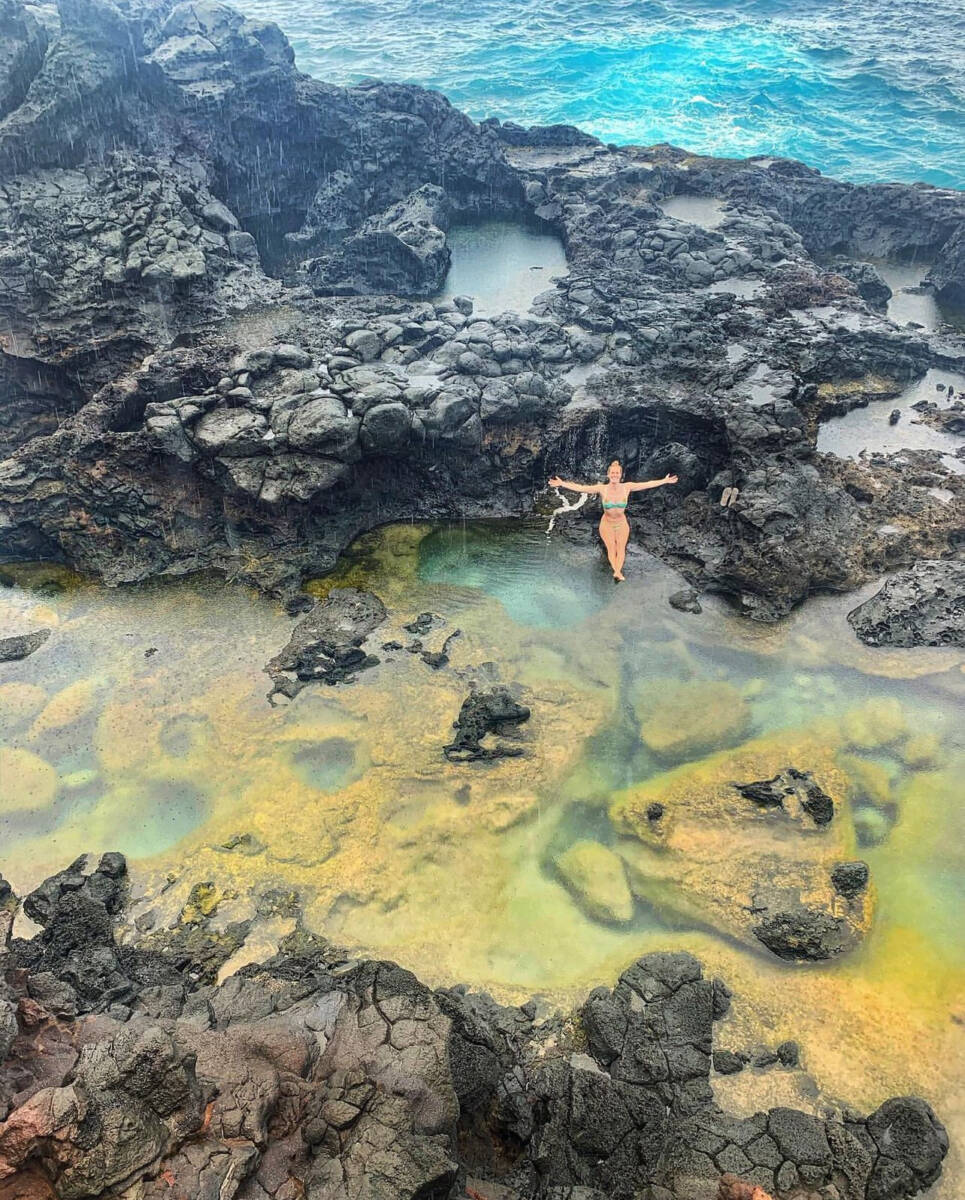
Image by @the2freedomjunkies
Frequently Asked Questions
What is the Pohoiki Warm Springs and why is it considered one of the best hot springs in Hawaii?
The Pohoiki Warm Springs is located on the Big Island and is a popular spot for locals and tourists. It is a series of natural hot pools formed by geothermal activity known for its healing and therapeutic properties.
Can you swim in Queen’s Bath on Kauai?
You can swim in Queen’s Bath, but it is essential to exercise caution as it can be dangerous during high tides. It is recommended to check the tide forecast before visiting and to avoid swimming during rough conditions.
Why are the Pools of Oheo also known as the Seven Sacred Pools?
The Pools of Oheo, located in the Haleakala National Park on Maui, are considered sacred by the Hawaiian people. There are more than seven pools, but the name comes from the fact that seven major pools can be seen from the upper viewpoint.
Why are the Kapoho Tide Pools currently closed?
The Kapoho Tide Pools on the Big Island are closed due to the damage caused by the eruption of the Kilauea volcano in 2018. The pools were a popular spot for snorkelling and swimming, but it is uncertain when they will reopen.
Is it safe to swim in the Makapu’u Tide Pools on Oahu?
While swimming is allowed in the Makapu’u Tide Pools, it is essential to note that the area can be dangerous during high tides and strong currents, much like at the Queen’s Bath. Checking the tide forecast and using caution when swimming is recommended.
